In Figure PS is the bisector of ∠QPR and PT ⊥QR . Show that ∠TPS=12(∠Q−∠R)
Given In ΔPQR,∠>∠R, PA is the bisector of ∠QPRandPM⊥ QR .
To prove ∠APM=12(∠Q−∠R)
Proof Since, PA is the bisector of ∠QPR
∴ ∠QPA=∠APR ....(i)
In ΔPQM, ∠PQM+∠PMQ+∠QPM+180∘ [by angle sum property of a triangle]
⇒ ∠PQM+90∘+∠QPM=180∘ [∵PM⊥QR⇒∠PMQ=90∘]
⇒ ∠PQM+90∘−∠QPM ...(ii)
In ΔPMR, ∠PMR+∠PRM+∠RPM=180∘ [by angles sum property of a triangles]
⇒ ∠90∘+∠PRM+∠RPM=180∘ [∵PM⊥QR⇒∠PMQ=90∘]
⇒ ∠PRM=180∘−90∘−∠RPM
⇒ ∠PRM=90∘−∠RPM ...(iii)
On subtracting Eq. (iii) from Eq. (ii), we get
∠Q−∠R=(90∘−∠QPM)−(90∘−∠RPM) [where∠PQM=∠Qand∠PRM=∠R]
⇒ ∠Q−∠R=∠RPM−∠QPM
⇒ ∠Q−∠R=[∠APM+∠APM]−[∠QPA−∠APM] ...(iv)
⇒ ∠Q−∠R=∠QPA+∠APM−∠QPA−∠APM [by using Eq. (i)]
⇒ ∠Q−∠R=2∠APM
∴ ∠APM=12(∠Q−∠R) Hence proved.
Topper's Solved these Questions
Similar Questions
In figure PS is the bisector of ∠QPRof ΔPQR. Prove that QSSR=PQPR.
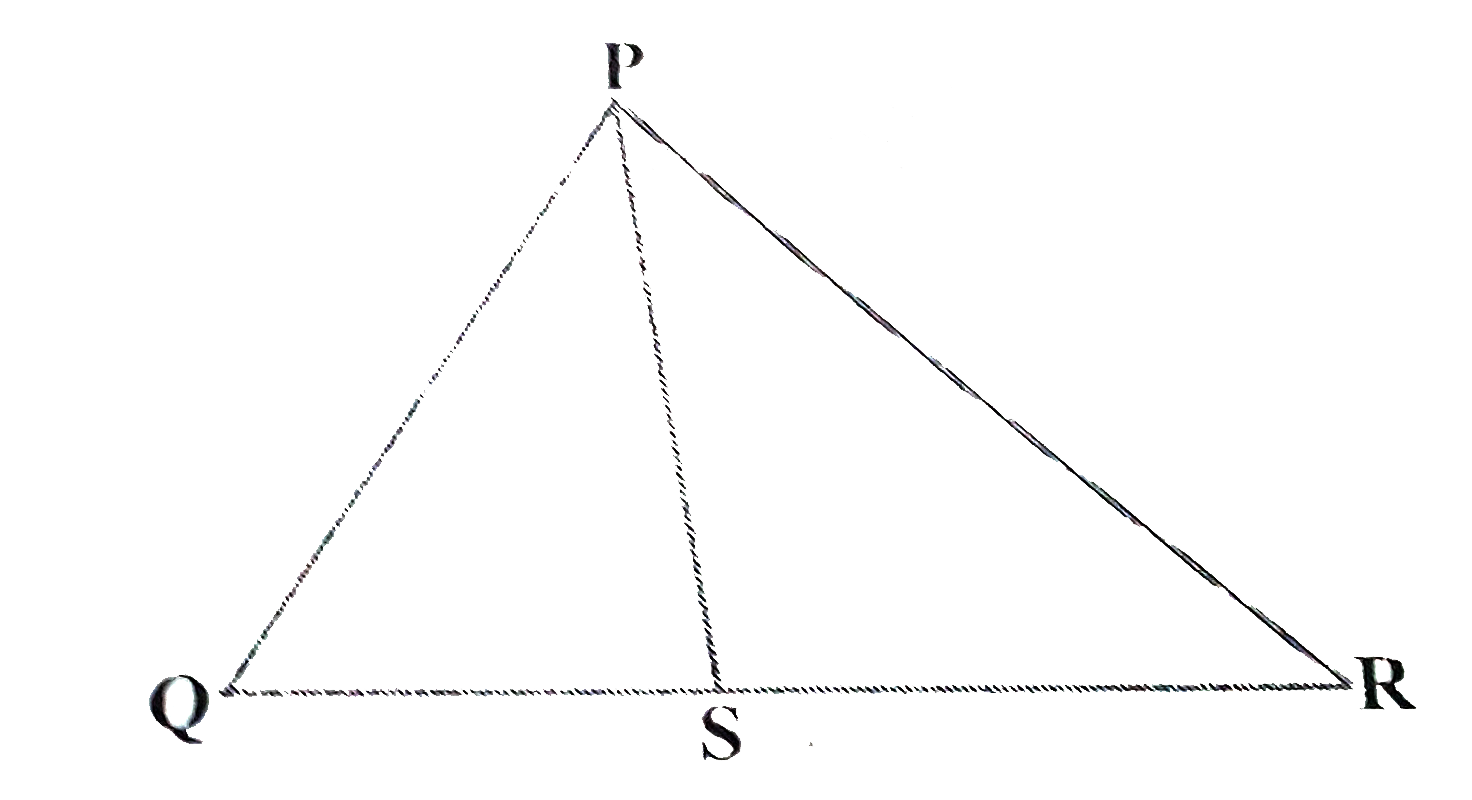 View Solution
View SolutionIn Fig. 6.44, the side QR of PQR is produced to a point S. If the bisectors of ∠PQR and ∠PRS meet at point T, then prove that ∠QTR=12∠QPR.
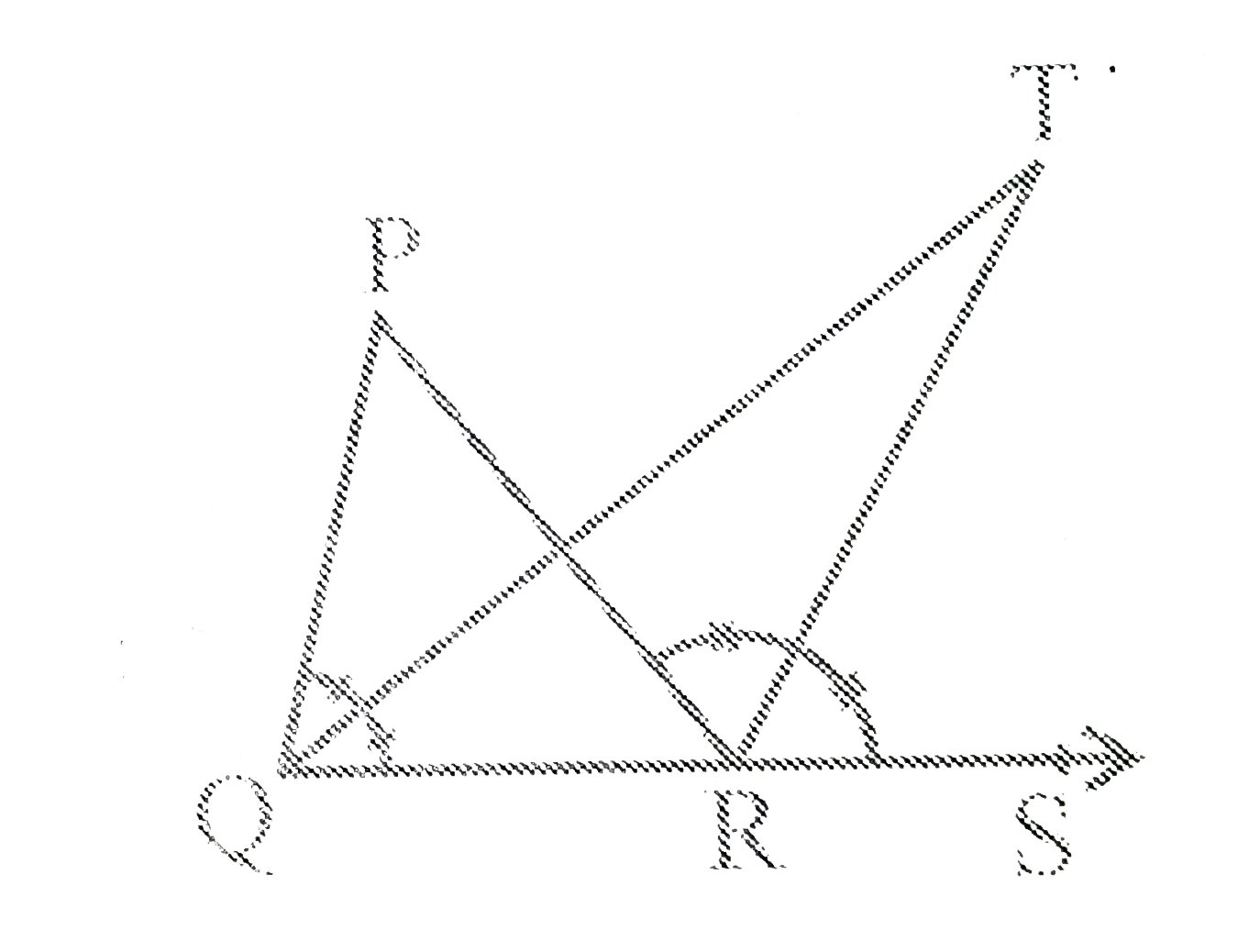 View Solution
View SolutionIn Figure, PSDA is a parallelogram in which PQ=QR=RS and APBQCR. Prove that ar ( PQE)= ar ( CFD).
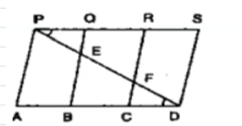 View Solution
View SolutionIf P + Q = R and P - Q = S, prove that R2+S2=2(P2+Q2)
View SolutionIn Fig 7.51, PR > PQand PS bisects ∠QPR. Prove that ∠PSR >∠PSQ.
 View Solution
View SolutionIn Figure, ∠QPR=∠PQR and M and N are respectively on sides QR and PR of PQR such that QM=PN . Prove that OP=OQ, where O is the point of intersection of PM and QN.
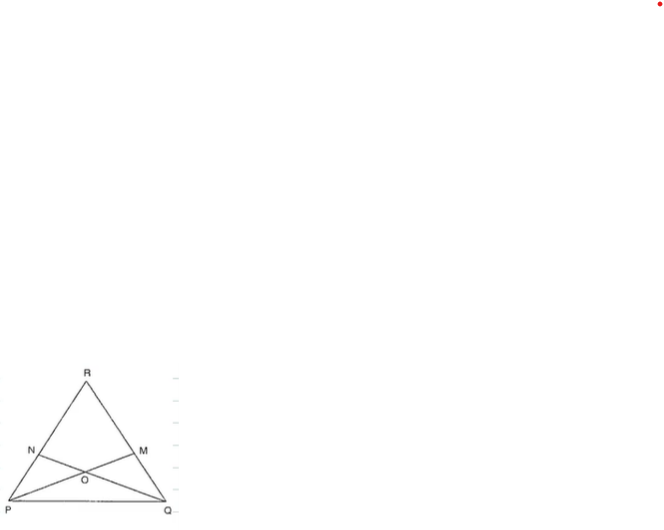 View Solution
View SolutionIn Figure, PQRS is a parallelogram, PO and QO are, respectively, the angle bisectors of ∠P and ∠Q . Line LOM is drawn parallel to PQ . Prove that: PL=QM (ii) LO=OM
View SolutionIn Fig. 4.238, S and T are points on the sides PQ and PR respectively of PQR such that PT=2cm , TR=4cm and ST is parallel to QR . Find the ratio of the areas of PST and PQR . (FIGURE)
View SolutionIn Figure, PQRS and ABRS are parallelograms and X is any point on side BR. Show that : ar(^(gm)PQRS)=ar(^(gm)ABRS) ar(AXS)=12ar(PQRS)
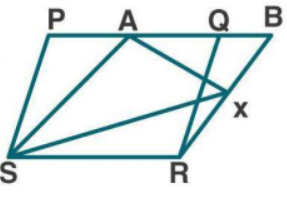 View Solution
View SolutionIn Fig. 6.15, ∠PQR=∠PRQ, then prove that ∠PQS=∠PRT.
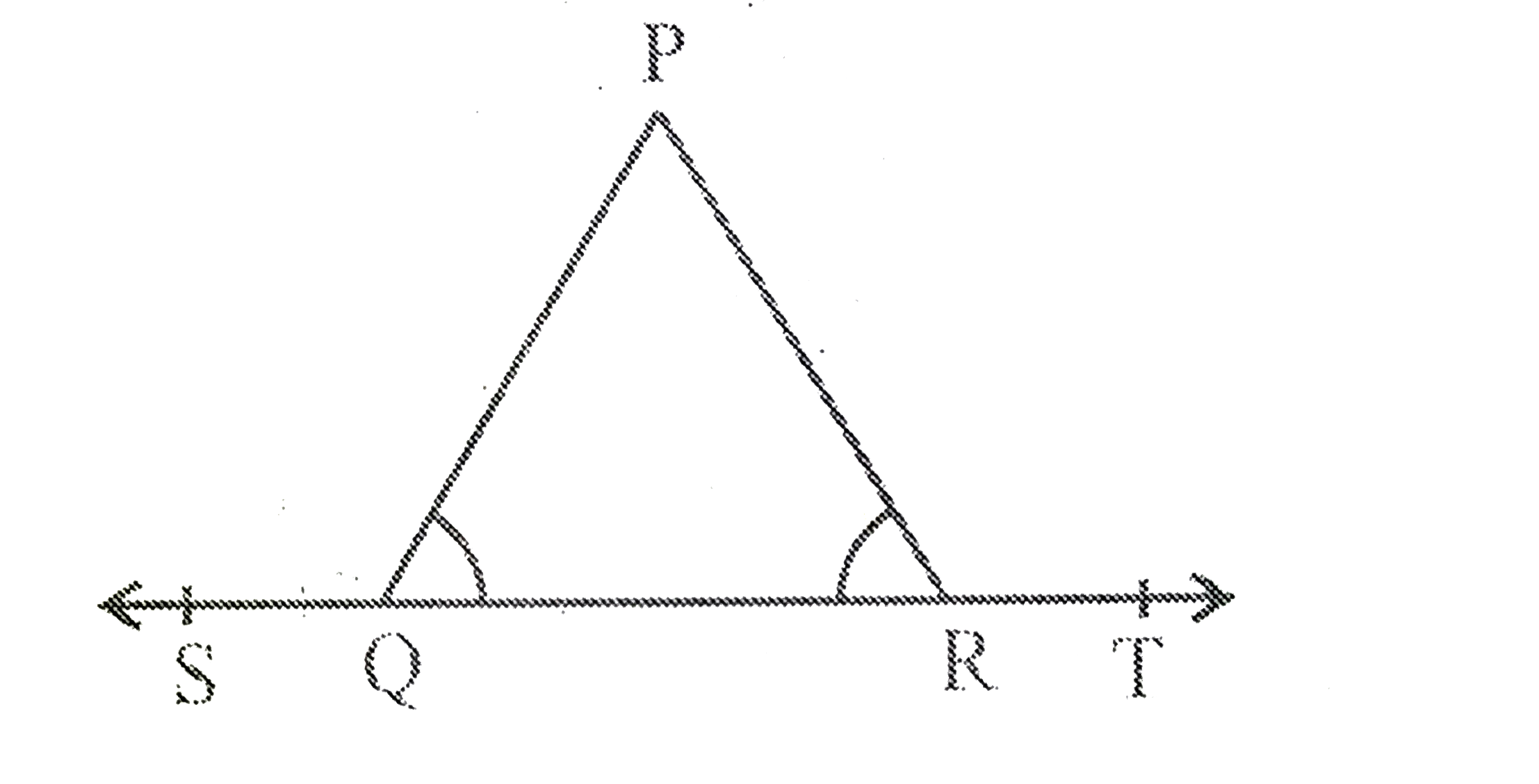 View Solution
View Solution

